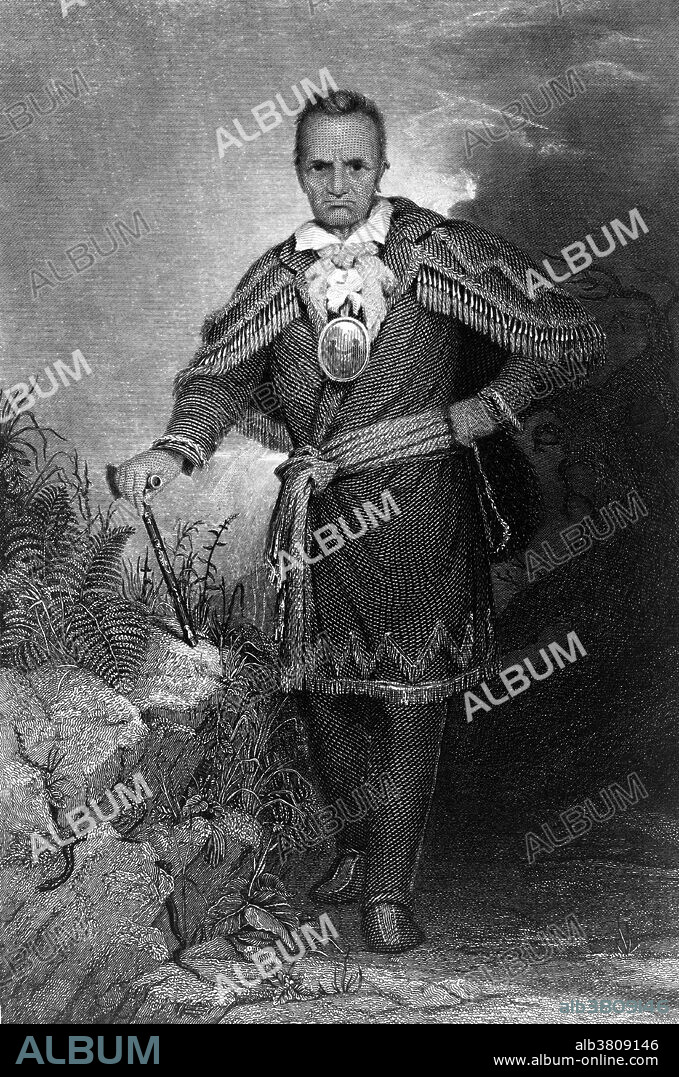alb3809146
Red Jacket, Seneca Indian War Chief

|
Zu einem anderen Lightbox hinzufügen |
|
Zu einem anderen Lightbox hinzufügen |



Haben Sie bereits ein Konto? Anmelden
Sie haben kein Konto? Registrieren
Dieses Bild kaufen.
Nutzung auswählen:

Titel:
Red Jacket, Seneca Indian War Chief
Untertitel:
Siehe automatische Übersetzung
Sa-go-ye-wat-ha (Seneca chief Red Jacket) engraving by M.J. Danforth, based on a painting R.W. Weir. Red Jacket (1750 - January 20, 1830) was a Native American Seneca chief of the Wolf clan. Red Jacket took his name, one of several he used, for a highly favored embroidered coat given to him by the British for his wartime services. The Seneca were allied with the British Crown during the American Revolution, both because of long trading relationships and in the hope that the Iroquois could limit colonial encroachment on their territory. After their ally lost, the Seneca were forced to cede much of their territory to the United States. Many of their people resettled in Canada at what is now the Six Nations Reserve in Ontario. He became famous as an orator, speaking for the rights of his people. In 1792 he led a delegation of 50 people to Philadelphia. President Washington presented him with a special "peace medal", that he wore on his chest in every portrait painted of him thereafter. His later adult name, Sagoyewatha, which roughly translates as "he keeps them awake", was given by the Seneca about 1780 in recognition of his oratory skill. His "Religion for the White Man and the Red" further expressed his profound belief that Native American religion was fitting and sufficient for Seneca and Native American culture. It has been documented and preserved as one of the best examples of oratory. In the War of 1812, Red Jacket supported the American side.
Persönlichkeiten:
Bildnachweis:
Album / LOC/Science Source
Freigaben (Releases):
Model: Nein - Eigentum: Nein
Rechtefragen?
Rechtefragen?
Bildgröße:
3183 x 4800 px | 43.7 MB
Druckgröße:
26.9 x 40.6 cm | 10.6 x 16.0 in (300 dpi)
Schlüsselwörter:
18. JAHRHUNDERT • 18. JH. • AMERIKANER • BERÜHMT • BERÜHMTE PERSÖNLICHKEIT • ILLUSTRATION • ILLUSTRATIONS • INDIANER • INDISCH • MANN • NOTABEL • PERSON • PERSöNLICHKEITEN • PERSÖNLICHKEITEN • PROMINENZ • RED JACKET
 Pinterest
Pinterest Twitter
Twitter Facebook
Facebook Link kopieren
Link kopieren Email
Email
